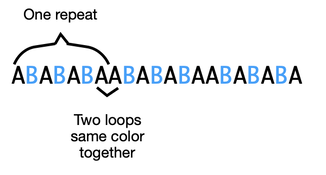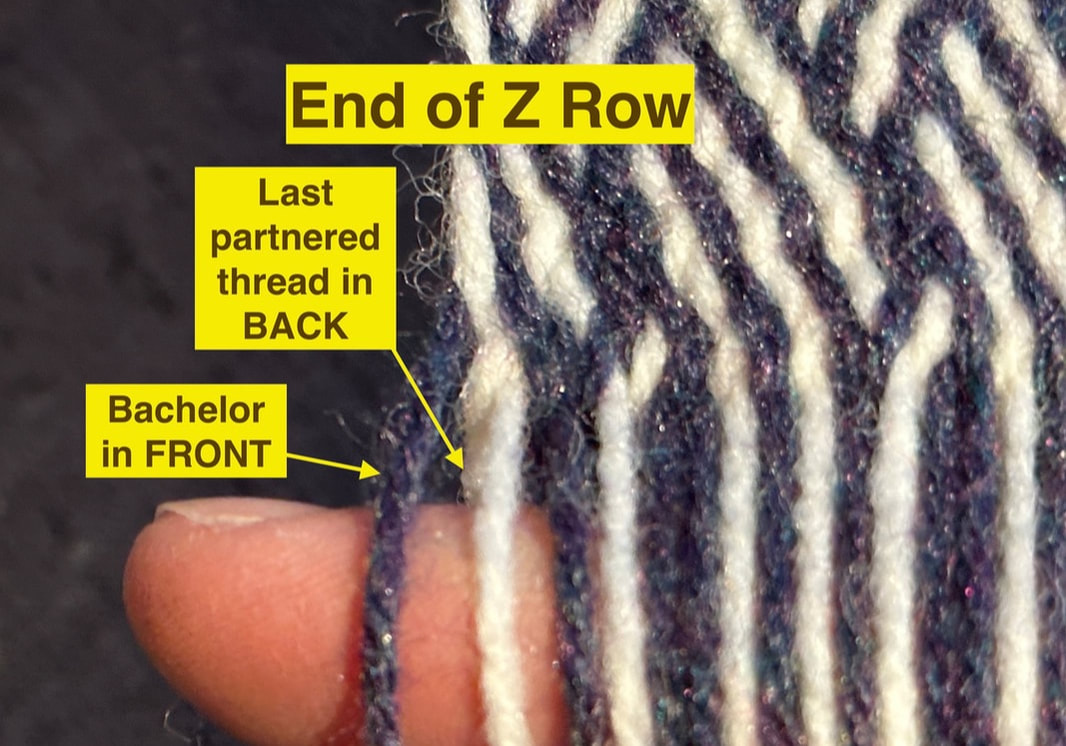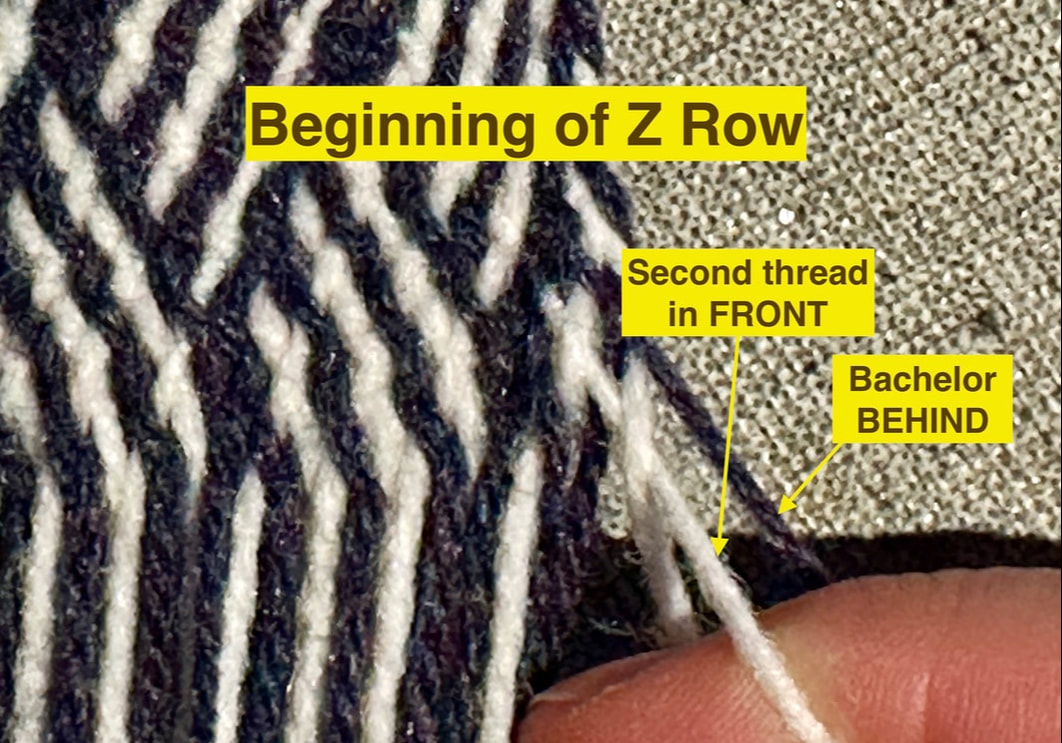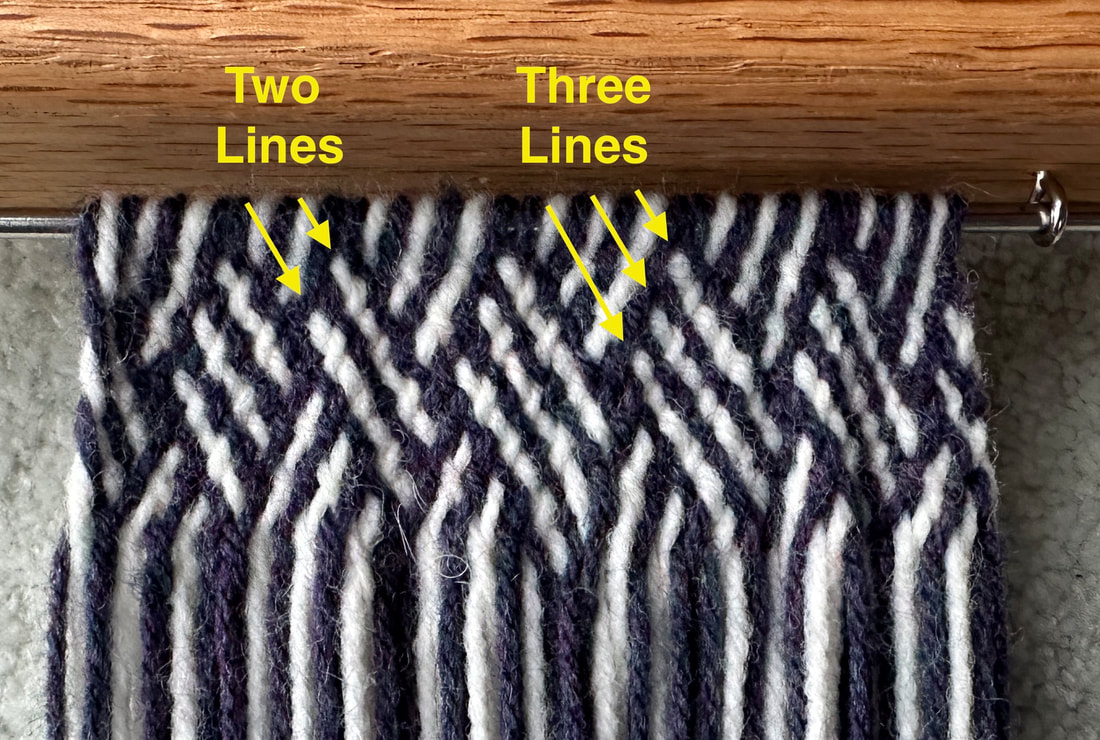The basic pattern for two contrasting colors A and B is meaning one loop (two threads) of A, one loop of B, and so forth. Repeating this pattern three times gives a warp of 21 loops with the sequence: The key to this pattern is the repeat of two loops of A that break up the straight alternating ABAB sequence. Once the frame is set up, the next step is to work consistent 1-1 interlacing. I started with treating the first row as a normal plait row but found that I exchanged the two edge threads, messed up the careful arrangement, and didn’t get the desired pattern. In order to keep the threads in order I came up with the following sequence: Instead of picking up both threads at the beginning of the first Z row I place the first thread as a back thread and pick up the second. Carol James calls this first thread a bachelor as it doesn’t have a partner this row. This starts the row with each thread going under a single thread. At the end of the row I put down the first of the two threads and pick up the edge thread (a second bachelor). This sets me up for working the next row in S as an overplait row. Keep repeating these two rows, one in Z and the next in S and watch the pattern grow. The only challenge now is keeping an eye on the crossings and making sure that no threads jump out of place. When looking at the evolving pattern, look for sets of 3 lines in color B. In a previous attempt at this pattern I noticed that one of the sections didn't look like the others. On closer examination I saw that one section had only two white lines where the others had three. After determining this was a warping error I undid the entire sequence and started again with the correct warping. Glad I caught it early and not after another 20 or 30 rows! Happy spranging, and let me know how this works for you.
0 Comments
Leave a Reply. |
Archives
February 2024
Categories
All
About SharonI am a sprang designer, creating new patterns in this ancient textile art form. |
|
|







 RSS Feed
RSS Feed